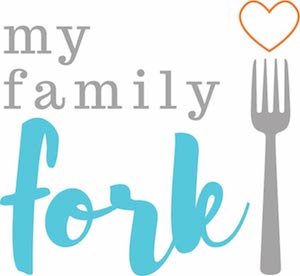Last week I shared five tips to encourage your kids to eat more veggies. While it’s most important to know what you can do in this regard, it is also important to be aware of some of the common pitfalls that can thwart your efforts. Believe me, I catch myself making a couple of these mistakes from time to time. But as parents, we’re learning too. The first step is to be aware of what to do and what NOT to do, then we practice, practice, practice! Here’s what you want to avoid:
Bargaining
“If you eat your veggies you’ll get a treat.” Or, “If you eat your veggies you can have more pasta.” No. In the kid’s mind, this places higher value on the treat or the pasta, or whatever it is. Let’s keep all food on the same plane. If you put it on the table, you’ve already communicated that you approve. After that, the kids choose from what you offer and decide how much to eat. Sometimes I even put a serving dessert for each person on the table along with everything else. There are times the kids decide to eat it before their meal (and they still eat their meal), and sometimes they decide to save it for afterward.

Brooke Lark
Rewarding
“Yay, you got an A!” “Yay, you cleaned your room!” “Yay, you won your soccer game! Let’s go out for ice cream!” Maybe the win, or the sense of accomplishment or achievement is a reward in itself. If additional celebration is important to you, think of non-food rewards. The best ones are experiences you have together with your kids—a hike to a special place, a visit to a museum, going to the movies. Food rewards are prevalent in our society, and when they become a habit it can be a tough one to break.

Alberto Casetta
Obligating
“You can’t leave the table until you finish your peas.” Was anyone raised like this? There are a couple of issues here. One is that the parent is overriding the kid’s sense of her internal cues. If she feels full and she hasn’t finished her peas, we want to acknowledge her good sense to stop eating when her body tells her to. It’s important for kids to preserve this ability and to recognize satiety, that feeling of fullness. If you’re worried that she only ate two bites of dinner, don’t. She’ll experience the natural consequences a half hour later when she’s hungry but mealtime is over and the kitchen is closed. Hopefully she’ll learn over time to eat enough at meals. The other issue is that it creates a power struggle. Obligating kids to eat something is often met with more resistance, so save your energy!
Tell kids that they don’t like vegetables.
I hear it so often. In my practice I’ll ask a child if they like various vegetables, then they’ll look at their parent who replies, “no, you don’t like that.” Children’s preferences are not set in stone. In fact, the fluidity of what they like and what they don’t like can be a source of frustration for parents. Has your child ever come home and told you about how much they liked some food they ate elsewhere, then you got excited and made it at home, only to have them turn their nose at it? Kids’ preferences are constantly changing, this is one reason it is important to offer foods several, even dozens of times. Let’s let them decide what they do and don’t like without our telling them. What I WILL do is encourage a child to keep an open mind. Sometimes I do it using this fun fact: the cells that make up our tastebuds are constantly changing (they die off and are replaced by new cells every 10-20 days), so it’s kind of like having a new tongue! “Maybe your new tongue will like asparagus the next time you taste it, so make sure you try new foods and even foods you’ve tried before!”

If you’ve ever made any of these mistakes, don’t worry, we’ve all been there. I know these things and I still have to make an effort to avoid these pitfalls. If it happens, just move on and re-commit to what we know works best—offer, offer, offer, no pressure, positive role modeling and fun food-related activities!


